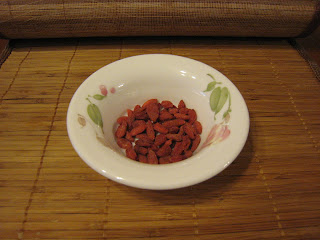Younger mypoic teens and adults are not spared. Macular endema which has simlar symptoms to MD can cause vision impairment if they persist to ignore or put up with the symptoms.
The good news is : the risk of developing MD and losing vision can be reduced if one follows a diet that is rich in certain classes of foods.
1. Fish oil
2. Green leafy vegetables
3. Nuts
4. Fresh fruits
5. Lucetin, zeaxanthin and carocarotenoids
Refrain from taking food laden with saturated fats (that includes margarine).
And most importantly, abandon smoking and sedantary lifestyle.
Ensure adequate protection of the eyes and face from sunlight and glare.
What the eye medical specialist and researchers recommend
* The views of opthamologists and consultants whom I've consulted.
* Information as shown on Australian TV Channel 7 two months ago featuring research findings and interviews with medical experts and patients.
Rather than dictate what and how much to eat, it is much easier to make slight modifications to our habits to improve eye health.
INCREASE INTAKE :
Spinach and silver beet are rich sources of lutein. It is important to diversify types of vegetable intake and include some green leafy vegetables at least twice a week.
Steam sweet corn is especially good for protection against M.D. It is a much better substitute to instant noodles or snacking on cookies.
Eat more : multigrains, muesli, oat bran, wheat germ and nuts.
Brazil nuts are said to be most beneficial for macular health. Almonds and cashew are good too.
Traditional herbal and Chinese remedies
Goji berries (枸杞子 Chinese wolfberries or Fructus Lycii) contains antioxidant compounds including zeaxanthin. Cone cells that affect the clarity of central vision, have a high concentration of zeaxanthin.
In TCM, goji is considered a tonic for the kidney which is believed to have a direct impact on eye conditions.

RECIPE
1. Put dried chrystanthemum flowers into a stainless steel tea ball.
2. Wash under running tap water for a few seconds. Tilt and drain the water away but do not open the teaball. Place gently into a tea pot.
3. Sprinkle 2 teaspoons washed goji berries into the bottom of the teapot.
4. Bring distilled water to the boil in a kettle.
5. Pour boiled water into the teapot and let the flowers steep for at least five minutes. The hot water will plump the goji berries which will exude a light fragrance that blends harmoniously with the flower scent.
6. When slightly cooled, pour into tea cup and enjoy.
Honeysuckle flowers are said to be good too but I have yet to research on this remedy.
I followed this chrysanthemum goji tea regimen for two weeks on a daily basis (in addition to adhering strictly to the above five classes of foods and the dos and don'ts). Without any active medical treatment safe for moisturising eyedrops, I had to rely on whatever dietary remedies at my disposal. Fortunately, I was certified to have recovered completely after six weeks by a renowned opthamologist. Of course, this is only a personal experience and may not work for everyone.
If you have symptoms of centre vision blurring, please consult a medical practioner or optometrist as soon as possible and seek more specialised expertise if necessary. Patients with positive prognosis normally take 3 to 4 weeks for complete recovery. Others may take longer or conditions may even deteriorate.
- Copyright Reserved
Thanks for sharing the goji berry infusion method with us. I've been told that goji is "hot" in nature, but couldn't find anything (in English) on the net about it or that says otherwise. Could you perhaps shed some lights on this? Really appreciate it ;)
ReplyDeleteGreetings Ly,
ReplyDeleteYou have rightly pointed out that goji berries have heaty properties and are unsuitable for use in some illnesses. I'm not trained in TCM but this site might throw some light. http://chinese.herbs.webs-sg.com/articles_31.html
Nevertheless, chrysanthemum (similar to marigold species)is believed to have cooling effect and balances the "hot nature" of goji. Most experienced cooks in the orient tend to think that steaming goji berries would be one way to overcome and reduce some of the heat. Hence, it is actually advisable not to eat goji in its dry and raw state, such as with museli and milk but to have it infused or steamed before consumption. Hope that helps.